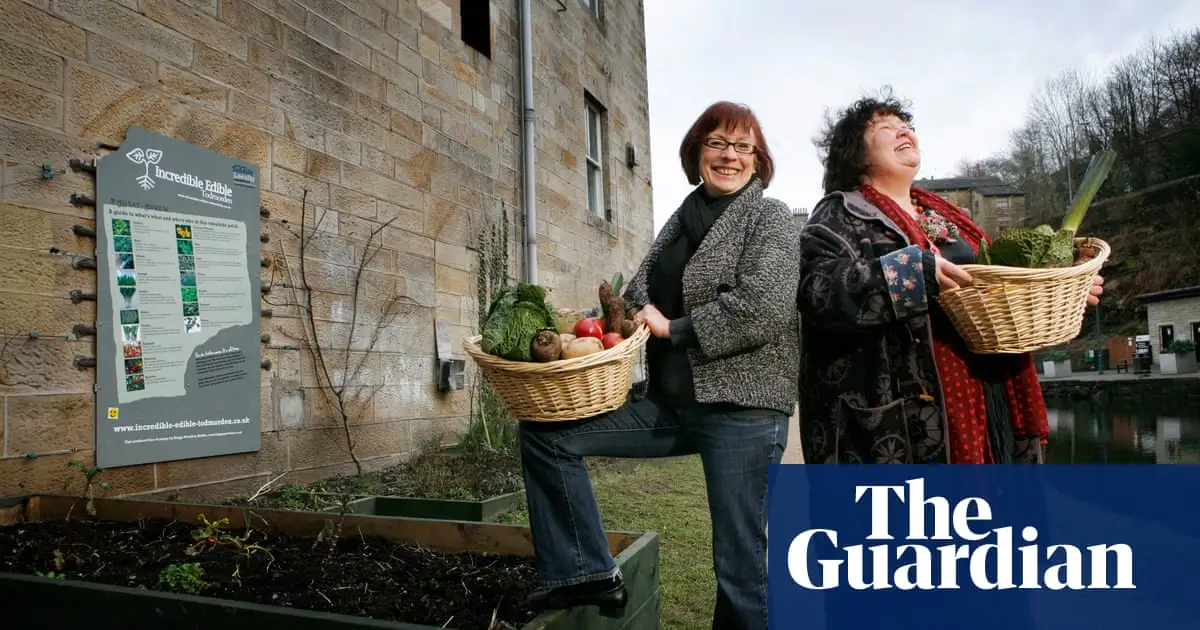Her big idea is guerrilla gardening – with a twist. Where guerrilla gardeners subvert urban spaces by reintroducing nature, Incredible Edible’s growers go one step further: planting food on public land and then inviting all-comers to take it and eat.
“I used food because it seemed to me that we needed to act fast,” Warhurst says. “We needed to get experience as soon as we could, and probably food was the thing that we could demonstrate an alternative way of living around, in a really simple way.”
Warhurst conceptualises the mission of Incredible Edible as three spinning plates: “You grow, in the place you call home, food to share – sometimes you ask permission, sometimes you don’t. You share the skills you’ve got, you find out who knows how to do things in your community.
“And the third plate is, if you’re really going to try to create impact in the place you call home, you have to try and support the economy, you have to try and see if there’s local jobs in it.”
The result is an all-round benefit for the community: free, healthy food, physical activity, and a forum to connect with neighbours in an increasingly atomised society. And for Warhurst, it shows something else: “What it’s doing is demonstrating that in a crisis when you’ve not got a load of money, there’s a lot you can do if you trust the people.”



I love the point made about grassroots movements already doing good work for the community, and the entities controlling public land won’t allow tax payers to allocate a portion of public lands for planting. There should be a checklist of approved stuff you can plant, managed by the municipality, and that checklist should be available in multiple languages. I understand you shouldn’t just be able to plant whatever (if not food, then no non-native/invasive species), and there shouldn’t be harmful pesticide use to some extent, but given the amount of people living in food apartheids with no access to fresh produce, it seems like the least effort, humane thing to allow.